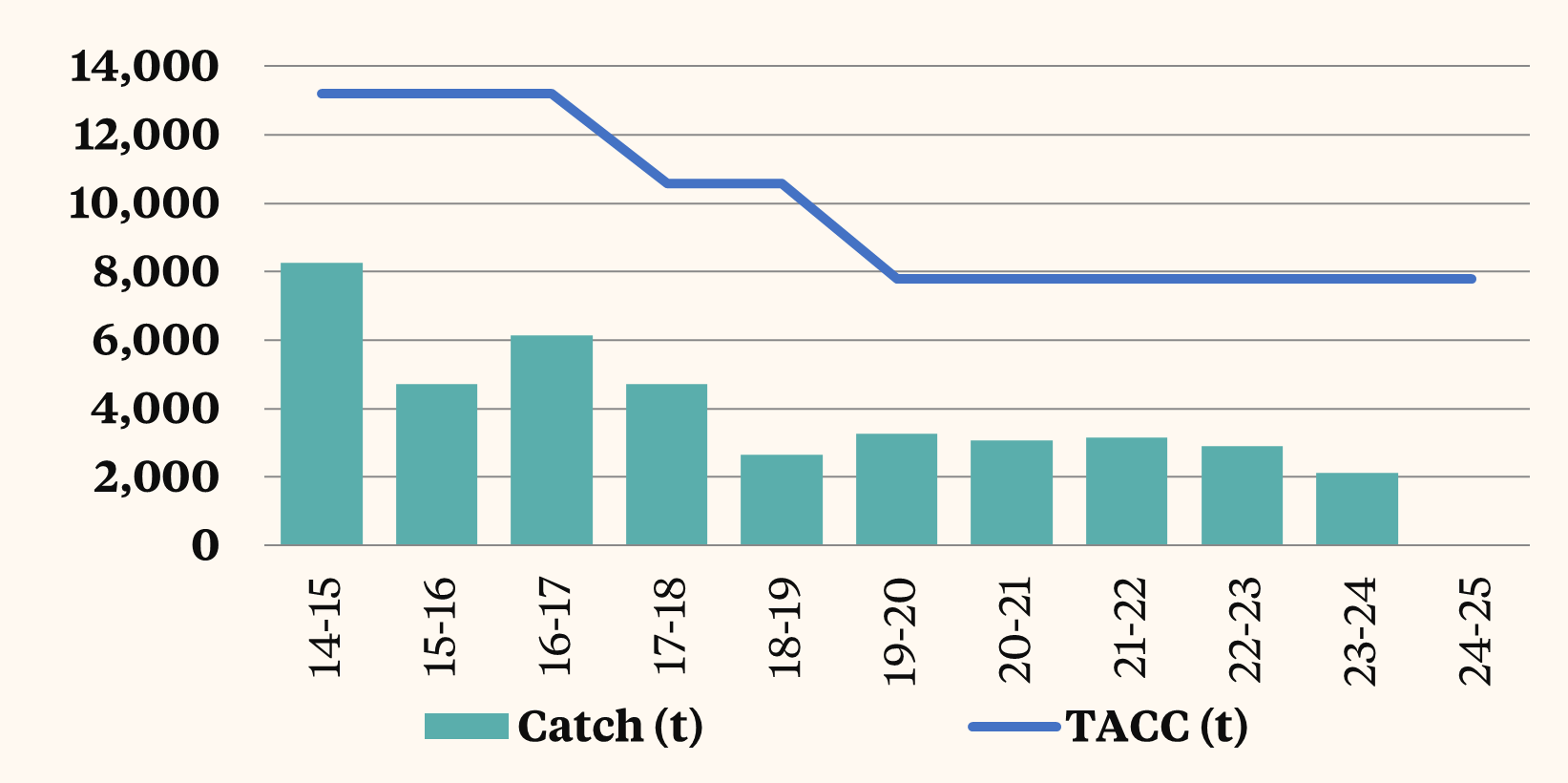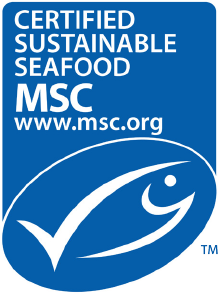Tiikati, Chilean hake, Patagonian hake, Southern hake
The New Zealand hake trawl fishery is a well managed and sustainable fishery in accordance with the Marine Stewardship Council's Principles and Criteria for Sustainable Fishing.
New Zealand hake is harvested mainly by trawl from the South Island, off the east and west coasts and in sub-Antarctic waters. Hake are widely distributed throughout the middle depths of New Zealand waters. Adults are mainly found between 250 and 800 m, while juveniles are found in inshore regions shallower than 250 m. Hake start breeding around 6 – 10 years and live to roughly 25 years.
M. australis look similar to other hake but are distinct and only found in New Zealand and Patagonia.
The two main hake fisheries in New Zealand, off the west coast of the South Island (HAK 7) and on the Chatham Rise (HAK 4), have traditionally consisted of bycatch in the much larger hoki fisheries. In recent years, both have become important target fisheries. The hake fisheries overlap with the hoki and ling fisheries. As such, they are often considered and managed as a complex. Hoki and ling are both MSC-certified fisheries.
Hake is managed by Fisheries New Zealand (FNZ) using the Quota Management System (QMS). FNZ works in partnership with Seafood New Zealand | Deepwater Council (a not-for-profit organisation that works on behalf of fisheries quota owners). The two parties developed a joint-management framework with agreed strategic and operational priorities and work plans. The partnership is focused on determining the maximum economic yield of the deepwater fisheries by setting catch limits that maximise returns over the long term within the constraints of ecological sustainability.
The MSC Certification covers 55% of all hake caught in New Zealand. Hake was re-certified in September 2018, however, HAK 7 was withdrawn from certification in 2019.
For more information, download the full MSC Certification Report.
The MSC scheme follows international benchmarks to promote robust processes and uphold values of independence, transparency, impartiality and stakeholder consultation.
The MSC assessment process is run by an independent certification body (accredited by Accreditation Services International GmbH). A group of auditors (with expertise in the fishery and ecosystems under consideration) are responsible for scoring the performance of the fishery based on scientific evidence. Auditors must meet the qualifications and competencies set out in the MSC Certification Requirements.
In order to achieve MSC certification, a fishery must pass 28 performance indicators within three core principles: sustainable stocks, minimising environmental impact and effective management.
The certification process takes between 6 and 18 months. The assessment process includes opportunities for stakeholder input and peer review. Certification lasts up to 5 years, during which time the fishery makes any improvement


Assessment Summary

Sustainable target fish stocks
Principle 1 states a fishery must be conducted in a manner that does not lead to over-fishing or depletion of the exploited populations and, for those populations that are depleted, the fishery must be conducted in a manner that demonstrably leads to their recovery.
The current management approach for all hake stocks is based on stock assessment models and involves regular reviews of the total allowable catch (TAC) and total allowable commercial catch (TACCs). Changes to the TAC/TACCs or any other management measures are implemented to ensure the stocks are managed to the default target and limit reference points as specified in the Harvest Strategy Standard. The stock assessment results are reported in the Fisheries New Zealand Fisheries Assessment Plenary documents, with the likelihood

